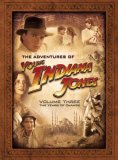| Reviews & Columns |
|
Reviews DVD TV on DVD Blu-ray 4K UHD International DVDs In Theaters Reviews by Studio Video Games Features Collector Series DVDs Easter Egg Database Interviews DVD Talk Radio Feature Articles Columns Anime Talk DVD Savant Horror DVDs The M.O.D. Squad Art House HD Talk Silent DVD
|
DVD Talk Forum |
|
|
| Resources |
|
DVD Price Search Customer Service #'s RCE Info Links |
|
Columns
|
|
|
Adventures of Young Indiana Jones, Volume Three - The Years of Change, The
If you're an Indiana Jones fan then you have plenty to be happy about right now. The Kingdom of the Crystal Skull is just around the corner, the original trilogy is being re-released as a special edition (it's a Lucas project of course), and Lego Indiana Jones is even coming out for the video game market very soon. In addition to all of that the third and final installment of The Adventures of Young Indiana Jones Chronicles has just been released as well. 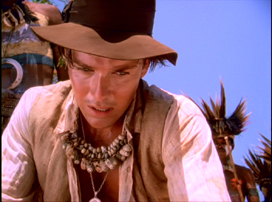
In case you have been living under a rock The Adventures of Young Indiana Jones was a televised visitation to the popular Jones franchise. Obviously the show focused on the exploits of a more youthful Indiana but with a rich timeline to explore it featured an adolescent and teenage character. These are the years that built Jones into the butt-kicking, smart-aleck archaeologist he became later in life and the show took a lot of time to look at moments that defined his personality. His trademark fedora even makes its way into the show during the teenage years.
If you never saw the show then you should know that each story featured Indiana in the midst of history. He hardly shaped the events of things to come but rather found himself with historical figures on every adventure. Hunting in Africa with Roosevelt, partying in Paris with Picasso, and fighting in skirmishes of the First World War hardly scratch the surface of what Jones has done and seen. Every episode in this show saw a wealth of famous people mixed into the stories and though it gave the show kind of a hokey feeling at times, there was some definite educational appeal for younger viewers.
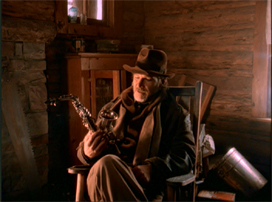 Over the course of the first two DVD releases for Young Indiana Jones we got a glimpse at a different kind of presentation for the show. These episodes originally aired with bookends provided by George Hall and stood out as single adventures. Each week alternated between the young Indiana played by Corey Carrier and the teenage one portrayed by Sean Patrick Flannery. For the purposes of the original VHS releases episodes were paired up chronologically (mostly) and the bookends were chopped in an effort to make for a more thematic experience.
Over the course of the first two DVD releases for Young Indiana Jones we got a glimpse at a different kind of presentation for the show. These episodes originally aired with bookends provided by George Hall and stood out as single adventures. Each week alternated between the young Indiana played by Corey Carrier and the teenage one portrayed by Sean Patrick Flannery. For the purposes of the original VHS releases episodes were paired up chronologically (mostly) and the bookends were chopped in an effort to make for a more thematic experience.
The success of these attempts varied somewhat and over the course of the two DVD sets we have seen many ups and downs. Arguably the most entertaining bits were found in the second installment as Jones was dealing with World War I but the massive amount of documentaries more than made up for any deficiencies. With a high recommendation for the first set and a collector's series rating for the second, where does the third release find its home?
Up to this point we have received fifteen Young Indiana films. Finishing the show off with ten DVDs this set features the remaining seven movies to seal the deal. During these episodes the turmoil of World War I ends and the show shifts its focus onto slower, less action-packed adventures. This change in venue isn't necessarily a bad thing though I'm not going to deny the fact that many episodes here felt boring and drawn out. I guess it comes with the territory but considering how fast-paced the previous volume was this one feels a tad disappointing in some ways.
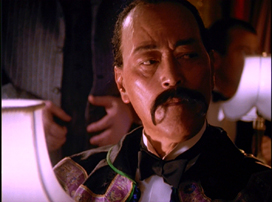 The first film, "Tales of Innocence" sees Europe still in the throes of war and Indy has found himself on assignment in Italy. In the first half of this episode he's competing with Ernest Hemmingway for the heart of a beautiful girl. Forgoing the typical Jones adventure this bit felt a tad too strung out for my taste though it was amusing enough to be endearing. After receiving an injury during the course of this story Indiana finds himself shipped to North Africa under the guise of being a French Intelligence agent. This second half felt more like the Jones action from the second set and contrasted the first part of this episode nicely.
The first film, "Tales of Innocence" sees Europe still in the throes of war and Indy has found himself on assignment in Italy. In the first half of this episode he's competing with Ernest Hemmingway for the heart of a beautiful girl. Forgoing the typical Jones adventure this bit felt a tad too strung out for my taste though it was amusing enough to be endearing. After receiving an injury during the course of this story Indiana finds himself shipped to North Africa under the guise of being a French Intelligence agent. This second half felt more like the Jones action from the second set and contrasted the first part of this episode nicely.
The second episode "Masks of Evil" here was kind of unbalanced as the first half had a typical story about Indy being an intelligence agent and the rest had to do with Dracula. That's right; Indiana takes on vampires and the undead. On one hand I suppose this was a nice tie-in to the movie franchise's supernatural spin but on the other it felt so out of place that it was just tacky. "Masks of Evil" may have been entertaining but it's an episode that basically defies logic and was made just to have a good time.
For my money, "Treasure of the Peacock's Eye" was the best movie available on this third volume. This one felt like a true Indiana Jones adventure with our hero finding a map and running off to look for treasure. This episode also marks the end of the Indy's time in war and features some familiar characters from the previous volumes. With the treasure being Alexander the Great's diamond there is a certain vibe to the whole episode that feels "classic" with regards to the franchise.
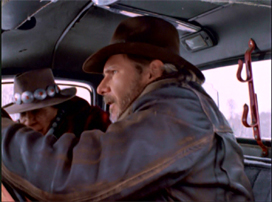 After the ruckus adventure for historical treasure Indy heads back to Paris and bumps into T.E. Lawrence once again. "The Winds of Change" takes a look at how the war changed things in Europe and sets up the franchise for things to come. Jones is working in France as a translator and finds himself in the midst of the Versailles talks as the episode foreshadows the rise of Nazi Germany. The second half of the episode heads over to Princeton and focuses on Jones' character after the war. These parts don't mesh well together but they are important for the show.
After the ruckus adventure for historical treasure Indy heads back to Paris and bumps into T.E. Lawrence once again. "The Winds of Change" takes a look at how the war changed things in Europe and sets up the franchise for things to come. Jones is working in France as a translator and finds himself in the midst of the Versailles talks as the episode foreshadows the rise of Nazi Germany. The second half of the episode heads over to Princeton and focuses on Jones' character after the war. These parts don't mesh well together but they are important for the show.
Considering the George Hall bookends have been removed for the purposes of this release many fans of Young Indiana Jones were wondering if Harrison Ford's piece was going to remain for "Mystery of the Blues". Well, fans rejoice because Ford does indeed appear for his bit in this episode. He introduces the flashback and closes out the episode in a similar fashion. The meat in between sees Indy meeting up with Al Capone and Elliot Ness just like he has other historical figures. It's farfetched and kind of silly when you get right down to it but this episode proves to be entertaining and one of the better ones on this set.
Taking a step back from the action and adventure that the character is known for, "Scandals of 1920" and "Hollywood Follies" feature a much more subdued chapter in Jones' life. In "Scandals" he works on Broadway with Gershwin and tries to run a show while romancing some girls on the side. Likewise "Hollywood Follies" gives Indiana a chance to work in Hollywood and make some movies with the likes of Erich Von Stroheim and John Ford. Given the amount that this character has been through over the past few years of his life these episodes serve as very weak ways to send this show off and stand out as the weakest of these seven films.
I don't want to say that I was disappointed with the third set of Young Indiana Jones. I had a lot of fun watching these episodes and I still found the program endearing in many ways. The problem is that by comparison this is the weakest of the three releases. There is significantly less focus this time around and Indy is quite literally all over the map with nothing to do at times. Some slower moments also come into play as the war ends and Indiana heads back to a "normal" life. These bits feel out of place compared to what we have come to expect from the franchise and the pacing truly drags in parts.
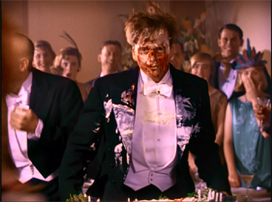 Some of these episodes such as "Treasure of the Peacock's Eye", "Mystery of the Blues", and "Tales of Innocence" stood out. Also while I didn't particularly care for "Scandals of 1920" and "Hollywood Follies" I do have to give credit for the two halves fitting together. In the earlier Jones set we found pairs of episodes being pieced together that had no place with each other. This crops up again with "Masks of Evil" and "Winds of Change" and it will make you scratch your head wondering why Lucas and his producers did such a thing.
Some of these episodes such as "Treasure of the Peacock's Eye", "Mystery of the Blues", and "Tales of Innocence" stood out. Also while I didn't particularly care for "Scandals of 1920" and "Hollywood Follies" I do have to give credit for the two halves fitting together. In the earlier Jones set we found pairs of episodes being pieced together that had no place with each other. This crops up again with "Masks of Evil" and "Winds of Change" and it will make you scratch your head wondering why Lucas and his producers did such a thing.
In the end if you purchased the first two Young Indiana Jones DVD sets then you will definitely want to pick this one up. The episodes of the show aren't quite as good as what we've come to expect but the documentaries (found below) astound once again. This set is recommended for the show itself but comes highly recommended with the documentaries put into play.
The third volume of The Adventures of Young Indiana Jones comes with packaging similar to the first. The two releases look great next to each other and they compliment the trilogy's box set quite nicely. Weathered artwork blankets the package though the outer box is flimsier and smaller than the one presented with the movies and there is no raised lettering to make the title stand out. Inside the set is a fold-out booklet that contains ten DVDs with nine being full of episodes and special features. The final disc is reserved for interactive content much like we found in the previous sets.
Like the other sets, this collection of episodes from The Adventures of Young Indiana Jones comes to DVD with a full frame aspect ratio. As you may or may not be aware Young Indiana Jones was shot using 16mm film rather than the standard 35mm in an effort to save on production costs. This allowed the creative team the chance to blow the budget on locations and sets which really take the cake in these episodes with spots from around the world and a ton of explosions.
In similar fashion to the other volumes, the third includes some great video quality that truly stands the test of time. The 16mm master has been spruced up wonderfully for this release and things look very good. Sure the transfer isn't perfect as some grain, shimmer, and edge enhancement popped up from time to time but I must say that the work done here has revitalized the show. Compared to the first two Jones releases this one features a virtually identical transfer with no discernable differences in similarly lit scenes. Considering the age of the material the video should have featured more flaws than are presented here but thanks to Lucas' tenacity for quality transfers the reputation flourishes in this regard.
While the video presentation showcased a mastery of restoration to the original picture I have to say that the audio falls short on expectations. The Adventures of Young Indiana Jones hits DVD with a somewhat lackluster 2.0 English Dolby Digital soundtrack. Given Lucas' track record for presentation values, I found it a little disappointing that this series didn't come with a 5.1 surround option. I guess you can't get everything in life, but it would have been nice. .
For what it is the audio is admittedly astute. Dialogue remains crisp and clear with a fine presence on the front channel. There is very little separation with this set up and sound effects comes across as flat on occasion. I suppose it was folly to expect something grandiose from a television show that aired during the early 90's but I can't help feel that the soundtrack could have had more vitality to it. The only available option as far as setting up your DVD experience is the ability to turn English subtitles on or off.
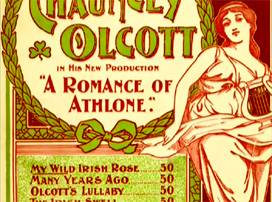 The third release for The Adventures of Young Indiana Jones comes packed with documentaries and bonus content just like the sets that came before it. If you have watched any of the prior releases then you already know that the documentaries are just about as valuable as the show itself. History buffs have a lot of time period pieces to sift through here and in the end this installment is no different.
The third release for The Adventures of Young Indiana Jones comes packed with documentaries and bonus content just like the sets that came before it. If you have watched any of the prior releases then you already know that the documentaries are just about as valuable as the show itself. History buffs have a lot of time period pieces to sift through here and in the end this installment is no different.
The first disc in this set features four documentaries with three of them revolving around historical figures featured in the film "Tales of Innocence". Clocking in at 34:56 "Unhealed Wounds - The Life of Ernest Hemingway" is just what it sounds like. This retrospective of Hemingway's life examines his writing in a very deep way to discover the underlying pain he wrote about. It all goes back to his involvement in the First World War and his severely wounded leg that got him out of it. He approached the injury with certain bravado and began writing as a way to let some of his feelings out on paper. This documentary covers quite a few details about the man and proved to be an interesting and educational supplemental.
The second documentary on this disc takes the focus away from a single person and examines the Foreign Legion. In "The French Foreign Legion - The World's Most Legendary Fighting Force" (28:22) we get a good look at the renowned group's history and members. The Foreign Legion has something of a reputation when it comes to war and in many ways they are idolized and romanticized by many across the globe. If you don't know much about them then this little documentary will give you a great overview.
Finishing off the first disc worth of bonus features are a pair of single person documentaries. The first is "The Secret Life of Edith Wharton" (30:35) which takes a look at another important writer from decades past. Wharton's involvement in high society placed some unique strains upon her creativity but it's safe to say that she persevered through her works such as "The House of Mirth". The final documentary on this disc gives us a glimpse at the life of Lowell Thomas in "American Storyteller" (29:18).
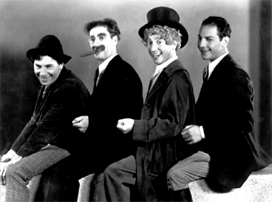 On to the second disc things start out with "For the People, Despite the People - The Ataturk Revolution" (30:25). This documentary was interesting as it took a look at the Ottoman Empire at the end of World War I and the subsequent rise of power that came from Mustafa Kemal. The Ataturk revolution paved the way for the Republic of Turkey and this feature gives a small glimpse at just how that happened. Along the same lines "The Ottoman Empire - A World of Difference" (33:05) looks at the aftermath of what transpired in that region.
On to the second disc things start out with "For the People, Despite the People - The Ataturk Revolution" (30:25). This documentary was interesting as it took a look at the Ottoman Empire at the end of World War I and the subsequent rise of power that came from Mustafa Kemal. The Ataturk revolution paved the way for the Republic of Turkey and this feature gives a small glimpse at just how that happened. Along the same lines "The Ottoman Empire - A World of Difference" (33:05) looks at the aftermath of what transpired in that region.
Two more documentaries are available on the second disc. "The Greedy Heart of Halide Edib" (28:23) kept the Turkey vibe going with a lengthy discussion about Edib's role in everything. The other feature on this disc has more to do with the episode "Masks of Evil" as Dracula is brought into the mix. "Dracula - Fact and Fiction" (24:53) weaves the lore and mainstream appeal of Dracula together to look at the monster and what fascinates us about him. This documentary felt a tad silly compared to the other ones on this release but at least it was better than the episode it came from.
"The Treasure of the Peacock's Eye" has three documentaries packed along side of the film. The first feature is "Bronislaw Malinowski - God Professor" (29:34) which looks at his prominence in the field of anthropology and in particular his work on the Trobriand Islands. To be quite honest most of this documentary is about his time with the Trobriand and his writings on the subject. It isn't until towards the end that the commentators begin discussing his life after anthropological fame had struck him. Keeping the anthropology theme going is "Anthropology - Looking at the Human Condition" (23:49). Rather than study one particular person this documentary looks at the field as a whole, even though it focuses on low riders mostly.
"New Guinea - Paradise in Peril" (25:05) is a fascinating look at the tribal cultures of New Guinea and the mysteries of the island. Set in a perfect location a stone's throw from the equator so much life and evolution has been allowed to take place over the years. While the New Guinea we see today is starkly different from how it was prior to 1930 when the Leahy brothers set foot on the land, there are still many tribal elements remaining. It's a shame that corporate greed and our tenacity for natural resources has pillaged the tropical paradise of New Guinea and this documentary follows the gradual demise of the civilization that was once untouched by the Western world.
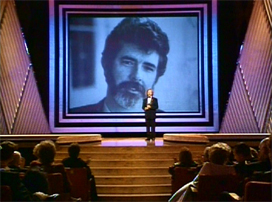 "Winds of Change" has a whopping six documentaries which means that they get their own disc altogether. Five of the six involve persons of interesting while the other features the Treaty of Versailles. In "The Best Intentions - The Paris Peace Conference and the Treaty of Versailles" (33:15), the roadmap to peace is displayed in all its tragic detail. Despite the best of intentions the next World War was inevitable due to many proceedings as Europe was weakened before Germany. The rest, as they say, is history.
"Winds of Change" has a whopping six documentaries which means that they get their own disc altogether. Five of the six involve persons of interesting while the other features the Treaty of Versailles. In "The Best Intentions - The Paris Peace Conference and the Treaty of Versailles" (33:15), the roadmap to peace is displayed in all its tragic detail. Despite the best of intentions the next World War was inevitable due to many proceedings as Europe was weakened before Germany. The rest, as they say, is history.
The five documentaries that focus on people here are "Woodrow Wilson - American Idealist" (28:41), "Gertrude Bell - Iraq's Uncrowned Queen"(33:07), "Ho Chi Minh - The Price of Freedom" (31:01), "Paul Robeson - Scandalize My Name" (32:32), "Robert Goddard - Mr. Rocket Science" (31:34). Like the other documentaries in this set, these five all have something to do with the episode they came from. They are each interesting in their own right but neither really stood out from the rest of the pack due to the fact that they were all educational and well constructed.
Like "Winds of Change" the special features for "Mystery of the Blues" are too many to pack onto the disc with the episode. Seven documentaries are available for the film set in Chicago and these ones are definitely more diverse than you'd expect. Naturally there is "Al 'Scarface' Capone: The Original Gangster" (27:55) and "On the Trail of Eliot Ness" (29:21) which are both interconnected and very entertaining to watch.
Prohibition takes the center stage in "America on the Rocks" (32:45). This documentary takes a look at the devastating effects of alcohol throughout history and how prohibition only made things worse. Around the same time period jazz took hold of America and "Jazz - Rhythms of Freedom" (31:55) shows the impact of that on our culture. If you have never had an appreciation for the music then this documentary will be eye opening with regards to its history. With Jazz as the theme you can't really talk about it without bringing up Louis Armstrong and "Ambassador of Jazz" (31:55) provides a lengthy discussion on the man.
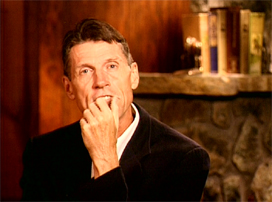 "Ben Hecht - Shakespeare of Hollywood" (31:15) gives us a glimpse at the life of the Chicago journalist turned Hollywood script writer. Hecht was a legend by anyone's standards and his influence can still be felt today. The final documentary on this disc is "Hellfighters - Harlem's Heroes of World War One" (29:15) which examines the African American's role in war. Right at the outset of this documentary I was impressed by the fact that Colin Powell joined a few veterans to discuss the subject. In many ways this was probably the richest documentary on this set and it stood out in memory long after watching it.
"Ben Hecht - Shakespeare of Hollywood" (31:15) gives us a glimpse at the life of the Chicago journalist turned Hollywood script writer. Hecht was a legend by anyone's standards and his influence can still be felt today. The final documentary on this disc is "Hellfighters - Harlem's Heroes of World War One" (29:15) which examines the African American's role in war. Right at the outset of this documentary I was impressed by the fact that Colin Powell joined a few veterans to discuss the subject. In many ways this was probably the richest documentary on this set and it stood out in memory long after watching it.
Disc number eight comes with three documentaries for "Scandal of 1920". The first is "Tin Pan Alley: Soundtrack of America" (31:15) which looks at some of the music of the time period and how they shaped our culture. Something as simple as "Take Me Out to the Ball Game" has been ingrained in us and this documentary looks at many ways songs such as that came to be. "Wonderful Nonsense: The Algonquin Round Table" (26:00) shows the whimsical group of writers and comedians who sat every day at The Algonquin hotel. Keeping up with the show theme is "Broadway: America Center Stage" (29:58). This documentary puts Broadway on the map once again as it talks about the theater district's creation and rise to prominence.
The final four documentaries make their way onto the ninth disc along with "Hollywood Follies". All themed with Hollywood in mind "The Rise of the Moguls: The Men Who Built Hollywood" (25:40) stood out as the broadest of the bunch with a much wider focus on the subject matter. The other three documentaries feature specific people of the era. "Erich Von Stroheim: The Profligate Genius" (32:53), "Irving Thalberg: Hollywood's Boy Wonder" (32:30), and "The World of John Ford" (33:19) focus on the specific people involved.
On the last disc of this set you'll find the interactive features and final inclusion of the Historical Lecture with H.W. Brands. "New Gods for Old" (1 hr 4 minutes) is a very interesting feature mostly due in part to Brands who brings a lot of knowledge and great presence to the camera. He will captivate you with his presentation and the frank with which manner he delivers his lecture makes the feature easily accessible and a great accompaniment to the documentaries on this release. Rounding out things are an interactive timeline and treasure hunting game, but those are significantly less interesting than the other features on this set.
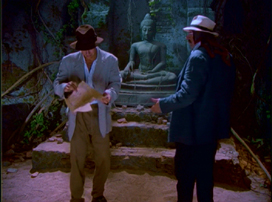 The Adventures of Young Indiana Jones has come to a close and though it didn't end quite as strongly as it could have it is still a fun show. The seven episode/films here vary greatly in quality but throughout them all there's no denying the appeal of the Jones character and the influence of Lucas in the series. With the Great War ending around this time period the show focuses on other aspects of Indy's life as he heads back to America. This takes away some of the purpose for the character and makes for a couple of droning adventures that can hardly be called "Indiana Jones" worthy.
The Adventures of Young Indiana Jones has come to a close and though it didn't end quite as strongly as it could have it is still a fun show. The seven episode/films here vary greatly in quality but throughout them all there's no denying the appeal of the Jones character and the influence of Lucas in the series. With the Great War ending around this time period the show focuses on other aspects of Indy's life as he heads back to America. This takes away some of the purpose for the character and makes for a couple of droning adventures that can hardly be called "Indiana Jones" worthy.
Rounding out the package once again is a whopping supply of 31 documentaries and bonus features. That's the nice thing about this release. Even though some of the episodes don't hold up quite so well the documentaries included here more than make up for any shortcomings. History buffs and Jones fans alike can appreciate this series and find something to love. Due mostly in part to the documentaries this time around the third volume of Young Indiana Jones comes Highly Recommended
Check out more of my reviews here. Head on over to my anime blog as well for random musings and reviews of anime, manga, and stuff from Japan!
|
| Popular Reviews |
| Sponsored Links |
|
|
| Sponsored Links |
|
|
| Release List | Reviews | Shop | Newsletter | Forum | DVD Giveaways | Blu-Ray | Advertise |
|
Copyright 2024 DVDTalk.com All Rights Reserved. Legal Info, Privacy Policy, Terms of Use,
Manage Preferences,
Your Privacy Choices | |||||||









